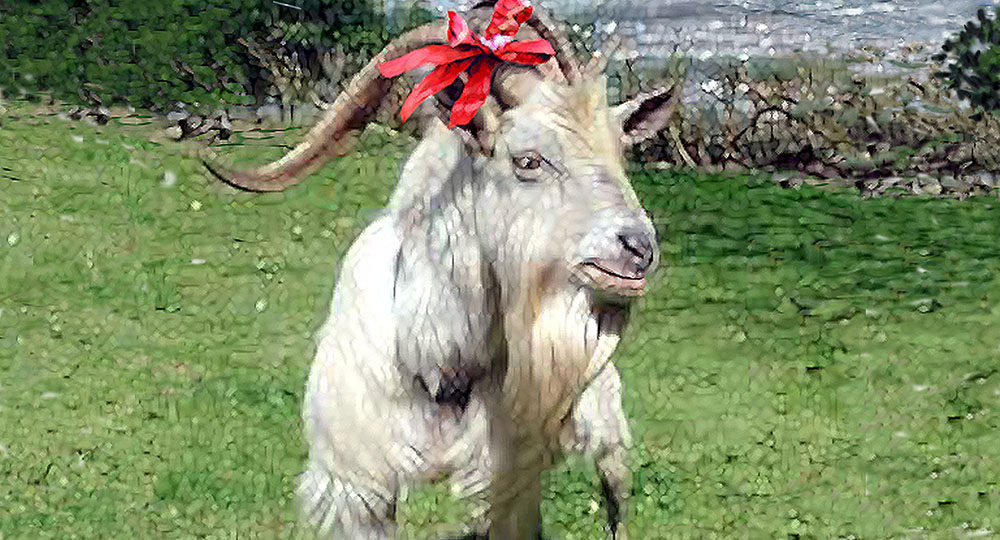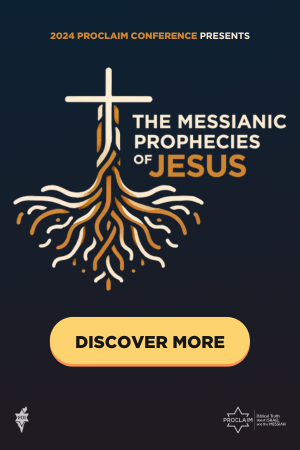The Yom Kippur Scapegoat
The ancient Israelites must have stood in awe when they observed the first ever, God-ordained celebration of Yom Kippur, the Day of Atonement.
This ritual was different from all others the Lord had given to His beloved people as they wandered in the wilderness of Sinai. It was filled with emotion and drama.
The Lord commanded Aaron, “Take from the congregation of the children of Israel two…goats as a sin offering, and one ram as a burnt offering” (Lev. 16:5). A bull was offered as a sin offering for Aaron, the nation’s first high priest. Then the people stared as the two goats were brought “before the Lᴏʀᴅ at the door of the tabernacle of meeting” (v. 7). It was there that lots were cast for the goats—“one lot for the Lᴏʀᴅ and the other lot for the scapegoat” (v. 8).
The Israelites must have watched wide-eyed as this drama unfolded. As many as were able crowded around the entrance to the Tabernacle. The goat chosen for the Lord was offered as a sin offering (v. 9):
But the goat on which the lot fell to be the scapegoat shall be presented alive before the Lᴏʀᴅ, to make atonement upon it, and to let it go as the scapegoat into the wilderness (v. 10) .
The Hebrew word for “scapegoat” is azazel. But the word also refers to the Devil or his dwelling. Literally, the lots were cast so that one goat would go to the Lord and the other to the Devil:
Aaron shall lay both his hands on the head of the live goat, confess over it all the iniquities of the children of Israel, and all their transgressions, concerning all their sins, putting them on the head of the goat, and shall send it away into the wilderness by the hand of a suitable man. The goat shall bear on itself all their iniquities (vv. 21–22).
Then the scapegoat was led far into the wilderness where it died, never to be seen again. “As far as the east is from the west, so far has He removed our transgressions from us” (Ps. 103:12). Later tradition says the Jewish people were so afraid the goat would wander back that they pushed it off a cliff. The scapegoat was a wonderful picture of Israel’s sins being carried away. It was an even better picture of what lies in Israel’s future.
Sin separates humanity from a holy God. God cannot look on sin, and He planned from the beginning of creation to deal with it: “He [Messiah, the seed of the woman] shall bruise your [serpent’s, or Satan’s] head, and you [Satan] shall bruise His [Messiah’s] heel” (Gen. 3:15).
The scapegoat is an extraordinary depiction of the Messiah who was yet to come. The prophet Isaiah saw Him so clearly that he was inspired to pen the following:
But He was wounded for our transgressions, He was bruised for our iniquities; the chastisement for our peace was upon Him, and by His stripes we are healed. All we like sheep have gone astray; we have turned, every one, to his own way; and the Lᴏʀᴅ has laid on Him the iniquity of us all (Isa. 53:5–6, emphasis added).
Like the Yom Kippur scapegoat, on whom the sins of a nation were laid, so would be laid on the Messiah of Israel the sins of an entire world. While the scapegoat took the sins for a season, the Messiah takes our sin for all time. Because He is deity, He can deal with sin in the past, present, and future. The scapegoat foreshadowed the greatest Gift the world would ever receive: a sin-bearer, the Jewish Messiah. While the ancient scapegoat dealt with national sin, the divine Scapegoat deals with individual sin, promising, “He who comes to Me I will by no means cast out” (Jn. 6:37). One day all Israel will be reconciled to God through the Messiah, in the ultimate fulfillment of Yom Kippur:
No more shall every man teach his neighbor, and every man his brother, saying, “Know the Lᴏʀᴅ,” for they all shall know Me, from the least of them to the greatest of them, says the Lᴏʀᴅ. For I will forgive their iniquity, and their sin I will remember no more (Jer. 31:34).
This year Yom Kippur begins on the evening of October 1. Jewish people around the world will fast and pray, hoping their sins have been forgiven and their names sealed in the Book of Life for one more year. There is no longer a priest to cast lots, no scapegoats to send into the wilderness, and no blood to be poured on the mercy seat. For those who know Him, Jesus Christ, the Messiah of Israel, has finished it all.








I believe Jesus became the scapegoat when he was baptized by John in the Jordan. After he came up from the waters he was driven into the wilderness by the the Spirit just as they would drive the scapegoat into the wilderness to leave the sins of the nation there. Also he met satan there and overcame the testing of the lust of the flesh the lust of the eye and the pride of life. No other man ever conquered those three temptations. Satan had identified the Messiah.
My wife and I also believe what you describe. If you start with Rosh Hashanah [Feast of Trumpets, the first of the year] as Jesus’ birth with Yom Kippur second, then all seven feasts are fulfilled in order ending with Pentecost.
If one goat is for the Lord and the other for the Devil, I don’t see how we could relate the one for the Devil to Jesus. “The goat here, the azazel goat, represented Satan, or evil. It’s the personification of evil.” That is not Jesus. Jesus was the Passover lamb. What about the separation of the sheep from the goats?
It seems to me that the azazel goat may have also represented the truth of what happened to Jesus. The sins of all man were laid upon His head and he was led away to be taken over by the devil (his torture and crucifixion). The other offering which was a blood offering was for God. But the azazel goat was representative of what happened to our sins – they went back to the devil.